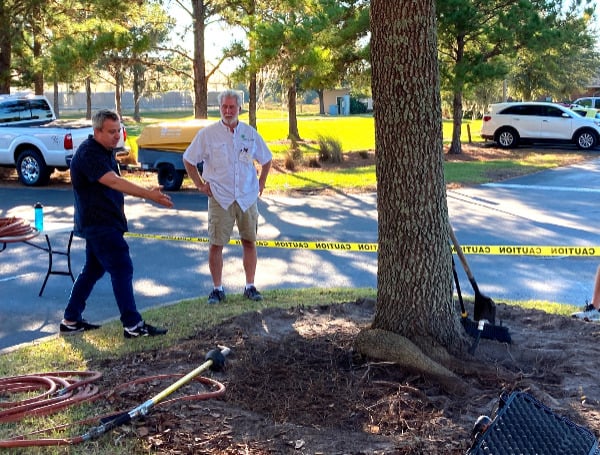
If you plant a wider array of tree species in urban areas, you might avoid your forest being wiped out by a single pest or disease, say University of Florida scientists.
“When cities are dominated by only a few species, new infestations of pests and diseases from overseas can just move through with dramatic results,” said Andrew Koeser, a UF/IFAS associate professor of environmental horticulture.
A diverse canopy is important everywhere, but particularly in Florida, where about 90% of the state’s 21.7 million residents live in cities. Urban dwellers need trees for shade, oxygen, and more.
In the news: Florida’s Citrus Industry Still A Vital Economic Force In State
In addition to the benefits humans derive from trees, canopy diversity can make urban areas better habitats for wildlife like birds, pollinators or butterflies, said Koeser, co-author of a new study that examines factors that impede tree diversity.
Deborah Hilbert, a doctoral graduate of the UF/IFAS College of Agricultural and Life Sciences who studied under Koeser’s supervision, led the study.
Researchers conducted focus groups with tree producers, landscape architects and municipal arborists around Florida.
Tree growers cited market demand, sales and other business-related production issues as impediments to offering a more diverse selection of trees. Landscape architects and city tree professionals mentioned ordinances and setback rules.
Many urban streets and residential areas are lined with a single type of tree – which can look beautiful, but the practice runs counter to ensuring a longer-living canopy.
“Some people love the look of uniform street plantings, and professionals design these to meet that need,” said Koeser, a faculty member at the UF/IFAS Gulf Coast Research and Education Center in Hillsborough County. “The problem is math.”
In the news: Florida Citrus Budget Revised Amid Production Drop
For example, if you have one or two tree species in your neighborhood, and a noxious pest comes in that that can kill that type of tree, it will likely kill 50% to 100% of those trees.
“In addition, there are regulations from HOAs – which can limit homeowners’ selections — and local governments that advocate for certain species,” Koeser said. “This could be a list of a few dozen or as few as three species.”
As potential solutions, several professionals from the focus groups suggested educating policymakers about tree species diversity, how it relates to climate change and the threat of devastating diseases and pests.
“Some types of trees will do better than others in harsher climates,” Hilbert said. “We don’t know yet which trees will thrive in the future, so planting a variety increases the chances that at least some of them will still be around in the next 30-plus years.”
Other strategies suggested by the study:
- Re-examine approved lists of species produced by tree growers and bought by tree professionals.
- Incentivize the use of less-common trees. For example, give credit for planting underused species.
- Avoid the temptation to want to plant an “instant landscape” with big nursery trees, as this tends to favor already-common species.
Android Users, Click Here To Download The Free Press App And Never Miss A Story. Follow Us On Facebook Here Or Twitter Here. Signup for our free newsletter by clicking here.
